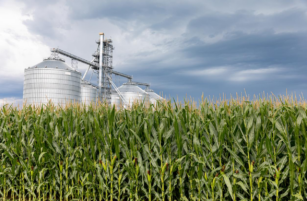Insight Focus
RIN prices collapsed 50% in six months. This is a reflection of what happens when the supply exceeds the mandate. But what are RINS and how is the renewable fuel mandate enforced in the US?
The RIN Cliff Possibility
More than 14.72 billion RINs were generated for ethanol last year, including 1.29 million generated for cellulosic ethanol and 14.72 billion generated for non-cellulosic ethanol. US producers were responsible for generating all the cellulosic ethanol RINs along with nearly 14.69 billion non-cellulosic RINs. The remaining 33.69 million ethanol RINs were generated by importers.

Approximately 42.25 million RINs were generated for renewable jet fuel in 2023, including 22.6 million generated by domestic producers and 19.65 million generated by foreign entities.
The EPA’s mandate for the production of ethanol for blending is set at 21.54 billion gallons in 2024 and 22.33 billion gallons in 2025. Actual US ethanol production in 2023 was 15.6 billion gallons which is more than the 14.72 billion RINS generated that year.
When the production and supply of ethanol exceeds the amount of generated RINS, the value of a RIN is bound to decline. In January of this year, the EPA calculated the value of an ethanol (D6) RIN at about 85 cents per gallon. By the end of May, the value had slipped to 65 cents. This development may create what is being called a RIN cliff.
Should ethanol production continue to grow as expected, the value of a RIN could conceivably fall to zero — an eventuality that would call for the EPA to seriously consider a revision of the requirements within the RFS.
Renewable Fuel Standard Explained
The production and use of ethanol and other biofuels worldwide has grown rapidly as nations muster resources in the struggle to control climate change. Regulating the growth in the production and trade of biofuels in the US, as required by the 2005 Clean Air Act, requires a complicated set of rules that were established by a coalition of refinery interests, government institutions and non-governmental groups concerned with environmental issues.
To both enforce the mandate for their use and develop the markets for these fuels, EPA developed a trading and enforcement program comprised of obligated parties (refiners and importers of gasoline or diesel) and renewable producers.
The US Renewable Fuel Standard (RFS) under the Clean Air Act was created within the Energy Policy Act of 2005 and further expanded by the Energy Independence and Security Act of 2007. EPA implements the RFS program in consultation with US Department of Agriculture and the Department of Energy.
The RFS program is a national policy that requires a certain volume of renewable fuel be used to replace or reduce the quantity of fossil fuel in transportation fuel, home heating oil or jet fuel.

Source: EPA
The EPA converts the statutory mandate volumes into percentage standards through annual rulemakings. The resulting annual percentage standards specify that for every gallon of petroleum fuel sold into the surface transportation sector in the US, a specified fraction of a gallon of biofuel must be blended into the surface transportation fuel supply.
What is a RIN?
To ensure compliance with the annual RFS mandates, the Renewable Identification Number (RIN) system was created. A RIN represents biofuel that has been produced and blended into transportation fuel. RINs are tradeable, and the market price of RINs plays a central role in the functioning of the RFS.

A RIN originates when a qualified biofuel is produced, and it can be bought or sold once that fuel is blended into the surface transportation fuel supply. Refiners and importers of petroleum fuels are the obligated parties under the RFS, and they can obtain RINs through their own blending operations or the purchase of RINs in the secondary market. Once obtained via blending or purchase, RINs can be turned into the EPA (by “retiring” the RIN) to demonstrate compliance.
RINs are generated upon production or import of a qualifying biofuel and are separated (detached) from that fuel when blended or sold into the fuel supply. Detached RINs are tradable, so an obligated party can acquire RINs for compliance either by purchasing the renewable fuel with the RIN attached or by purchasing RINs in the secondary RIN market.
An important feature of the RIN system is that the number of RINs generated per physical gallon of biofuel is based on the energy equivalence value with ethanol. Specifically, blending one gallon of ethanol generates one RIN, blending one gallon of FAME (fatty acid methyl ester) biodiesel generates 1.5 RINs, and blending one gallon of renewable diesel generates 1.6 or 1.7 RINs.

RINs are also bankable. RINs generated in a given year can be used for compliance with obligation for that calendar year or the following year. For example, RINs generated in 2024 can be used to meet compliance obligations in 2024 or 2025. Being able to bank RINs provides a buffer to fluctuations in fuel supply and demand. However, banked RINs cannot exceed 20 percent of a given year’s Renewable Volume Obligation (RVO) for an obligated party which is set by the EPA.

Source: US Energy Information Administration
Some refiners blend more ethanol than they are required to and can keep their excess RINs for up to two years, which they can then sell on the market to other refiners who may be unable to meet their blending requirements. Similarly, other blenders may also blend renewable fuel and capture RINs without having an obligation, and they, too, can sell their RINs on the market to other obligated refiners. In this way, RINs act as a market-based compliance tool that allows refiners to operate in a more flexible manner to meet their obligations.
For more detailed information about the RFS and RINs, visit the US Energy Information Agency at www.eia.gov.












